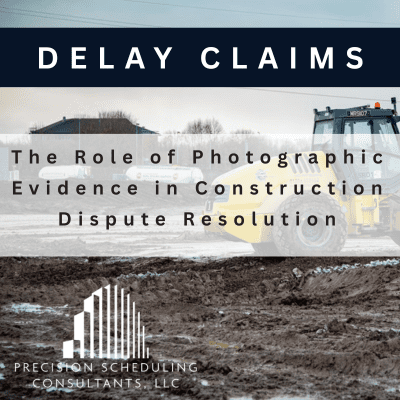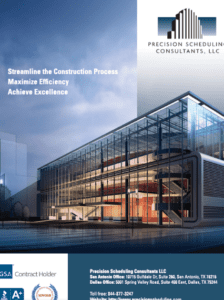Proper documentation serves as a lifeline during construction project disputes. While daily logs and written reports are essential, photographic evidence is critical in supporting claims and clarifying misunderstandings. Often, words alone can struggle to convey the full scope of issues on-site. Photographic documentation adds another dimension, providing irrefutable visual proof.
Enhancing Daily Logs with Visual Context
Daily logs are the backbone of construction documentation, recording daily activities, materials used, and labor hours. However, accompanying these records with photographs elevates their effectiveness. Images can vividly illustrate site conditions, progress milestones, and issues that arise. By incorporating photographs, construction consultants can enhance narratives, ensuring that all stakeholders have the same understanding of the project status.
For example, if a contractor reports an unexpected delay due to weather conditions, a dated photograph documenting severe weather can serve as compelling evidence. This visual proof clarifies the situation and strengthens the case for delay claims.
Documenting the Timeline of Events
A comprehensive timeline is crucial for identifying the cause and effect of construction delays. Photos serve as powerful time stamps. By capturing images consistently, stakeholders can create a much more robust timeline of events. Each photograph provides a snapshot of site conditions and critical activities, all corresponding to specific dates.
As storms roll in or equipment malfunctions, photographs can preserve the exact state of the project at that moment. When disputes arise, having these chronological records proves invaluable. They show how issues have progressed over time and help pinpoint when delays occurred.
Establishing Accountability
In disputes, determining responsibility is essential. Photographic evidence can help establish accountability among various parties involved in a project. For instance, if subcontractors fail to complete their tasks on time, photographs can prove their lack of progress. Conversely, pictures can show that all necessary prerequisites were fulfilled from the general contractor’s end.
When these photos are paired with clear daily logs, they create a powerful narrative that explains who was responsible for specific delays. This clarity helps in negotiations and resolution discussions.
Providing Clarity in Complex Scenarios
Construction projects often involve intricate details that can get lost in translation. By visually documenting site conditions, the impact of disruptions becomes clearer. Photographs can highlight issues like faulty materials, design changes, or inclement weather, which may seem minor in text but carry significant weight in reality.
Moreover, images can illustrate the complexities of a situation. For example, showing the state of a partially completed structure—compared to a fully completed structure—can highlight the effects of delays more effectively than any written description.
Supporting Claims with Quantifiable Evidence
Good photographic documentation doesn’t just rely on subjective impressions. Instead, it can add quantifiable data to claims. For example, photographs showing equipment idle due to delays can be vital for substantiating claims for equipment rental costs. Similarly, images showing workers standing idle can help validate claims for labor inefficiencies.
Transitioning from merely anecdotal evidence to quantifiable claims strengthens the case presented to mediators or in court, making the resolution process more efficient.
Creating a Visual Archive
Today’s technology allows construction projects to maintain an extensive visual archive. Utilizing smartphones or professional cameras, teams can create an organized repository of images. This gallery of photographs provides a historical overview of the project, allowing stakeholders to track progress and challenges over time.
Moreover, during project reviews or disputes, this visual archive can serve as a significant resource. Having comprehensive records available ensures that every voice is heard. It minimizes misunderstandings and helps bring clarity to discussions or negotiations.
Enriching Project Communication
Effective communication between stakeholders is critical. Photographic evidence plays a vital role in enhancing these conversations. Sharing images during project meetings fosters a deeper understanding of issues, leading to focused discussions. Instead of dwelling on technical jargon, parties can directly reference images, which helps streamline meetings.
When team members can visually see challenges and progress, they can work collaboratively toward solutions. This cooperation minimizes the chances of disputes escalating, as everyone operates from a shared understanding.
Leveraging Visual Proof for Effective Dispute Resolution
Understanding the nuances of construction project delays is paramount. Daily logs and written records lay the groundwork, but photographic evidence takes documentation to the next level. By consistently capturing the project’s state, construction consultants can establish accountability, provide clarity, and ultimately assist in resolving disputes efficiently.
Incorporating photographic evidence enhances documentation efforts, creating a well-rounded narrative that supports claims and helps identify the root cause of delays. With this robust evidence, construction consulting firms can navigate disputes effectively, ensuring all parties reach a fair resolution based on facts, accuracy, and visual proof.
When you prioritize proper documentation, you safeguard your project against potential disputes. Partnering with experienced construction consultants who understand the importance of photographic evidence can be a game-changer in effective dispute resolution. The road to project success is challenging, but with strong documentation practices, we can confidently overcome obstacles.


